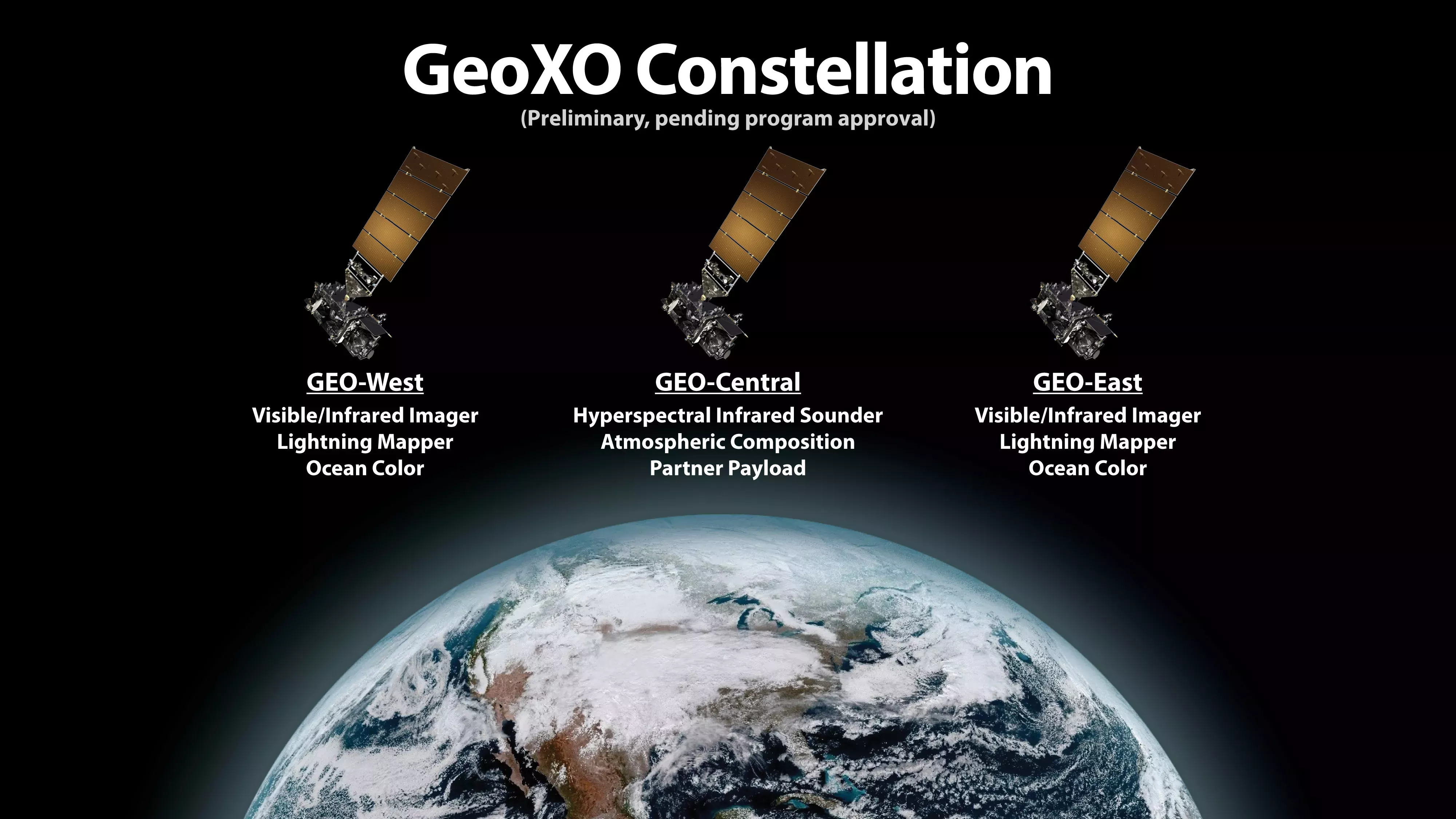
NOAA’s next-generation geostationary satellite program, Geostationary Extended Observations (GeoXO), was formally initiated on November 9, 2021. GeoXO will now enter the program definition phase of development.
During the program definition phase, the GeoXO team will refine mission requirements, detail acquisition strategies, schedules, cost estimates, resource planning, and risk management, and confirm technology readiness.
GeoXO, as proposed, is a ground-breaking mission that will advance whole Earth System observations from geostationary orbit. GeoXO will supply vital information to address major environmental challenges of the future in support of U.S. weather, ocean, and climate operations. As NOAA's next generation of geostationary satellites, the GeoXO mission will continue and expand observations provided by the GOES-R Series.
NOAA is working to ensure these critical observations are in place by the early 2030s as the GOES-R Series nears the end of its operational lifetime.
